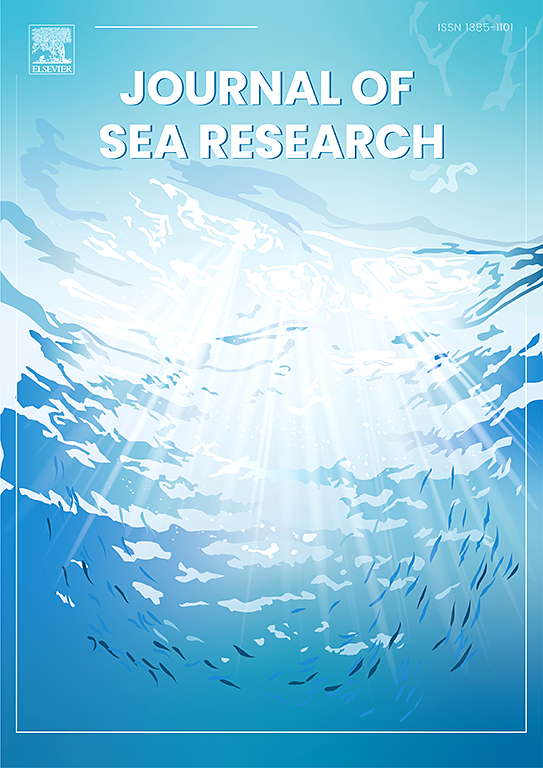The diversity and biogeography of macrobenthic fauna in the rocky intertidal zone of islands in the Pearl River estuary: effects of island area, isolation, salinity and human disturbance
IF 2.9
4区 地球科学
Q2 MARINE & FRESHWATER BIOLOGY
引用次数: 0
Abstract
The theory of classical island biogeography alone cannot encapsulate the dynamic pattern of island biodiversity, factors such as salinity, and anthropogenic influence and species traits should be considered. Here, islands of varying sizes, degrees of isolation, salinity, and anthropogenic influence from the inner to the outer waters of the Pearl River estuary in China, were selected as the sampling sites. During January to March 2023 (dry season), macrobenthic fauna, comprising various groups with distinct ecological traits, were collected in the rocky intertidal zones. Environmental gradients were derived from long-term salinity, temperature, depth, and dissolved oxygen (DO) records from the Pearl River Estuary ecosystem field station, field measurements of anthropogenic disturbance, and GIS-calculated isolation distances. Island areas were obtained from the Guangdong Province Department of Natural Resources. The findings revealed that the species richness of the total, Molluscs and Annelids fit the power-function species–area relationship, whereas Arthropods did not. The generalized linear models showed a significant negative correlation between anthropogenic disturbances and Arthropod richness. Principal coordination analysis and beta diversity indicated substantial dissimilarities in the spatial structure similarity of communities among islands in this area. The analysis of generalized dissimilarity modeling indicated both environmental gradients and spatial distance could affect the β diversity of macrobenthic fauna. In the upper tidal zone, β diversity was predominantly influenced by geographic distance, while in the middle and lower zones, community composition was shaped by the salinity gradient. The outcomes of this study supports the role of area and spatial isolation in structuring community composition and diversity. However, environmental gradients such as salinity and anthropogenic disturbances may take precedence over other biogeographical processes. The significance of these gradients varies across different groups.
珠江口岛屿岩质潮间带大型底栖动物多样性与生物地理:岛屿面积、隔离、盐度和人为干扰的影响
单纯的经典岛屿生物地理学理论不足以概括岛屿生物多样性的动态格局,需要考虑盐度、人为影响和物种特征等因素。本研究选取了中国珠江口内外水域大小、隔离程度、盐度和人为影响不同的岛屿作为采样点。2023年1 ~ 3月(旱季),在石质潮间带收集了大型底栖动物,它们组成不同的类群,具有不同的生态特征。环境梯度来源于珠江口生态系统站长期盐度、温度、深度和溶解氧(DO)记录、人为干扰的野外测量和gis计算的隔离距离。海岛面积数据来自广东省自然资源厅。结果表明,总软体动物和环节动物的物种丰富度符合幂函数的物种-面积关系,而节肢动物则不符合幂函数关系。广义线性模型显示,人为干扰与节肢动物丰富度呈显著负相关。主协调分析和beta多样性表明,该地区岛屿间群落空间结构相似性存在较大差异。广义不相似模型分析表明,环境梯度和空间距离对大型底栖动物β多样性均有影响。在上潮区,β多样性主要受地理距离的影响,而在中低潮区,群落组成受盐度梯度的影响。本研究结果支持了面积和空间隔离在构建群落组成和多样性中的作用。然而,盐度和人为干扰等环境梯度可能优先于其他生物地理过程。这些梯度的意义在不同的组中有所不同。
本文章由计算机程序翻译,如有差异,请以英文原文为准。
求助全文
约1分钟内获得全文
求助全文
来源期刊

Journal of Sea Research
地学-海洋学
CiteScore
3.20
自引率
5.00%
发文量
86
审稿时长
6-12 weeks
期刊介绍:
The Journal of Sea Research is an international and multidisciplinary periodical on marine research, with an emphasis on the functioning of marine ecosystems in coastal and shelf seas, including intertidal, estuarine and brackish environments. As several subdisciplines add to this aim, manuscripts are welcome from the fields of marine biology, marine chemistry, marine sedimentology and physical oceanography, provided they add to the understanding of ecosystem processes.
 求助内容:
求助内容: 应助结果提醒方式:
应助结果提醒方式:


